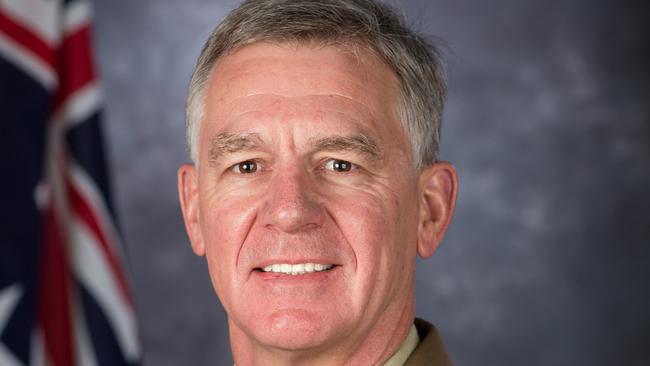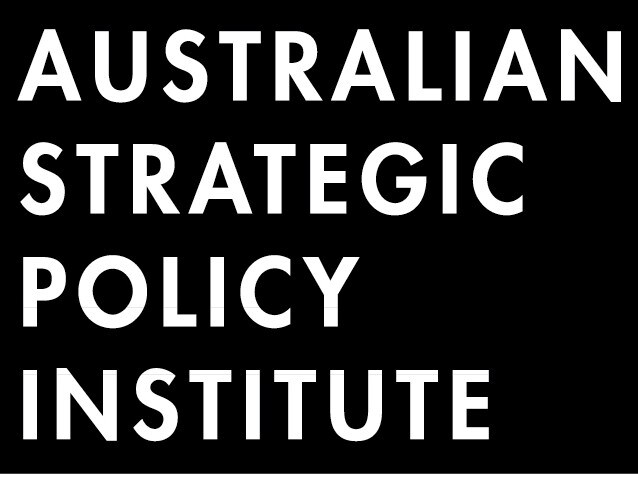This concept is intended to get the army thinking about what it must start doing now to inform the Defence Department’s strategic review process and to tailor future investment.
The biennial Chief of Army Land Forces Seminar will be held at Land Forces 2018 in Adelaide this week and there is likely to be discussion on such issues regarding the Indo-Pacific. The “accelerated warfare’’ concept is designed to deal with the rapidly increasing pace of change being driven by both the development of technology and its use in innovative ways for military purposes.
Burr says there is a very clear need to use the army’s future investments to harness these technological possibilities.
“These will be reflected in our future requirements to deliver those capabilities. We already have things like our unmanned aerial systems, so our drones are in some ways an early step into this area. But in a more mature sense, it’s absolutely imperative to make robotic and autonomous systems part of our broader capability suite,’’ he says.
“Army, and the entire joint force, needs to embrace that and our future concepts will very clearly articulate those requirements, and how we can leverage that technology.”
The Chief of Army, Lieutenant General Rick Burr
The army must exploit the opportunity to explore new ways to use emerging technology, Burr says. It is important for industry and academia to share ideas and help get equipment into the hands of operators so that they can experiment with it and innovate.
True innovation is new technology plus new ways of doing business, he says. “That’s where we want to be. This is a time full of opportunity, so our innovation days, our open days, and our focus on partnerships is a key part of our innovation platform to make sure that we can share each other’s ideas and needs, and explore this,’’ the army chief says. “As a modest-sized defence force, harnessing these opportunities is critical for us.”
Burr says he is very happy with the army’s new Steyr rifle. “In fact, all of our individual soldier kit delivered under [the] Land 125 [purchasing program] is tremendous. “I think our soldiers’ personal, individual equipment, is probably the best in the world. Our people give us a competitive advantage and I think the decision some years ago to invest in the soldier as a priority was crucial. We are reaping the dividends of that now and our job is to continue to deliver on that, and modernise off that base.”
A big focus is robotics and autonomous systems, and how soldiers partner with them. “With manned and unmanned teaming, we can generate more capacity to do more things at scale and, where possible, we can reduce risk and be safer in the way we prosecute our operations.”
Unmanned ground vehicles with sensor and communications suites will, for example, be used to search high-risk areas. “That will obviously be a critical part of our understanding and seeing the battlefield, and helping to secure other assets.” Such vehicles could rescue wounded soldiers in very dangerous situations and robotics could help soldiers carry heavier loads with ease. “Army is more than just the ground force,” Burr says. “We’re into all domains today — cyber, space, maritime, and air — and that will become more so as we introduce more capabilities.” Already in the current investment program are air-defence systems, long-range and precision weapons and anti-ship missiles.
“As army brings all that together, we need to be much more robust in the way we can employ those capabilities, as well as our traditional army role. So there’s an exciting future ahead. We need to intellectually and conceptually think about how we can make the most of these capabilities to create advantage.”
Burr’s record is formidable. Before his promotion to Chief of Army, he’d been deputy chief of army since January 2015. Before that, the Americans appointed him deputy commander of the US Army in the Pacific. He was the first foreign officer to hold such a position and he was no random selection. The Americans knew him well as a graduate, with distinction, of the US Marine Corps Command and Staff College and the USMC School of Advanced Warfighting.
Burr commanded Australia’s Special Forces Task Group in Afghanistan in 2002 and Iraq in 2003. He then commanded all International Security Assistance Force special forces in Afghanistan in 2008. In 2007 he was seconded as a senior adviser to the Department of Prime Minister and Cabinet.
Burr formally took as as army chief in July from General Angus Campbell, who has become Chief of the Defence Force.
So does he have particular goals, as Chief of Army and the officer responsible for providing ready land forces?
“Like every new Chief of Army, I really focus on readiness, modernisation, and people. Those three pillars certainly are my focus. They’re the ones I’m accountable for. To always invest intellectually in our modernisation, and to deliver that modernisation to keep the army relevant and capable for an ever-changing context. And delivering that through our people, acknowledging them as our competitive advantage.”
Future acquisitions would be vital to ensuring the army is able to deal with a full range of scenarios. “Our modernisation priorities need to reflect that,” he says.
Burr has noted that the region has some of the fastest-growing economies, bringing prosperity and better lives to billions of people. But, he warns, growing threats, including those presented by non-state actors, mean the demand for defence technology to safeguard the region’s prosperity and security has never been greater. Australia is strategically positioned to bridge the Pacific and Indian oceans, he says.
A key role was the training Australia’s soldiers were able to give their counterparts in the Philippines when the city of Marawi was captured by the Islamic State (ISIS) terror group.
“The appearance of ISIS in our region was of great concern to everyone and the opportunity for us to work with the Philippines armed forces was obviously welcomed by them. We weren’t involved in any of the fighting in Marawi but we certainly gave what assistance we could in support,” the chief says. Since then, the army has sent mobile training teams to help Philippine troops develop capabilities they needed. That has covered counter-improvised-explosive-device techniques, urban operations, medical support and urban combat skills.
Burr believes that a dynamic and responsive model is very effective. The teams run a course overseas and then come home, or Philippine contingents are brought to Australia for training which they can pass on when they go home.
“I think it’s a very mature model, appropriate for the region. It’s a great opportunity for us to be able to work together, build strong partnerships in the region, generate a shared understanding of the problem, and work cooperatively to solve them.”
Are more such operations in the region likely and will Australia take part again? They are, Burr says. “And if we’re asked, I think that’s certainly something that provides options to government.
“But we already do a lot of engagement on any one day. We have people all around the region providing training teams, doing exercises, and working together. I’ve just been in East Timor where we have a fantastic co-operation program with the F-FDTL [Defence Forces of East Timor].
“We deal with many countries as part of our defence co-operation program. We don’t make a big fuss of it. It’s very important for us all to have a strong, cooperative partnership approach to our region.”
Brendan Nicholson is defence editor of the Australian Strategic Policy Institute site, The Strategist.
No comments:
Post a Comment